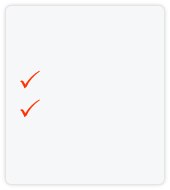
Globalshift.co.uk - copyright © 2009 to 2024; All rights reserved.
Data in this website may not be the most recent available Home | Terms of use
| Contact



S. AND E. AFRICA
Purchasing from a stall
Djibouti (the Republic of Djibouti) is in the Horn of Africa bordered by Eritrea to the north, Ethiopia to the west and south and Somalia to the southeast. The Red Sea and Gulf of Aden abut the eastern coastline.
The area was inhabited by migrants from the Nile Valley and Arabia for thousands of years. It became part of the Land of Punt (including parts of Somalia, Eritrea and Sudan) administered by sultanates in Zeila (now in Somalia). The Afars (from Ethiopia) and Somalis (including Issas) were the first in Africa to embrace Islam.
Ruled by various Afar and Somali sultanates for hundreds of years, France began to take control of north Djibouti, known as Obock, in 1883. In 1894 a French administration was established, called French Somaliland, whose railroad allowed it to usurp Zeila as the regional port.
The country voted not to merge with Somalia on its independence in 1960 and it was renamed the French Territory of the Afars and the Issas in 1967 after it again rejected union with Somalia.
A 3rd referendum supported independence and Djibouti was established in 1977.
The country is strategically located near the world's busiest shipping lanes, controlling access to the Red Sea and it now serves as a commercial hub. It is also the site of several foreign military bases.
Most of Djibouti overlies the southernmost part of the Arabian Plate where the Red Sea and Gulf of Aden sutures meet. It has a varied terrain of highlands in the north and level plains in the south. The low-lying Grand Bara desert covers part of southern Djibouti while the tallest mountain is on the border with Ethiopia and Eritrea at 2,028m.
Mostly comprising volcanics and metasediments of the uplifted margins of the Arabian Shield on the edge of the Afar Depression, the country has no identified indigenous oil or gas resources, either onshore or offshore and Globalshift believes it is unlikely to achieve any production in the future.
There has been some exploratory activity in the south and west where basins extend into Djibouti from Ethiopia.
The country does intend to export gas that will be imported from the Ogaden Basin of land-locked Ethiopia by pipeline. Initially it plans a single liquefaction train allowing for the production of 3 mm tonnes of LNG per year with an expansion option to 10 mm tonnes per year.

DJIBOUTI
Map and National Flag
South and East Africa








Capital
Population
Land area (sq kms)
Oil prod (000s b/d)
Gas prod (bcm/yr)
Oil cons (000s b/d)
Gas cons (bcm/yr)



Djibouti
0.9 mm
23,200
None
None
12
None
Djibouti is a semi-presidential republic. The President is the head of state and commander-in-chief sharing executive power with the Prime Minister and Council of Ministers.
The unicameral 65-member National Assembly is the country's legislature elected every 5 years. Government is dominated by the Issa clan.
The Ministry of Energy and Water is responsible for potential oil and gas resources.
Click below for:


Excel files - histories and forecasts of production and wells for all countries and regions


